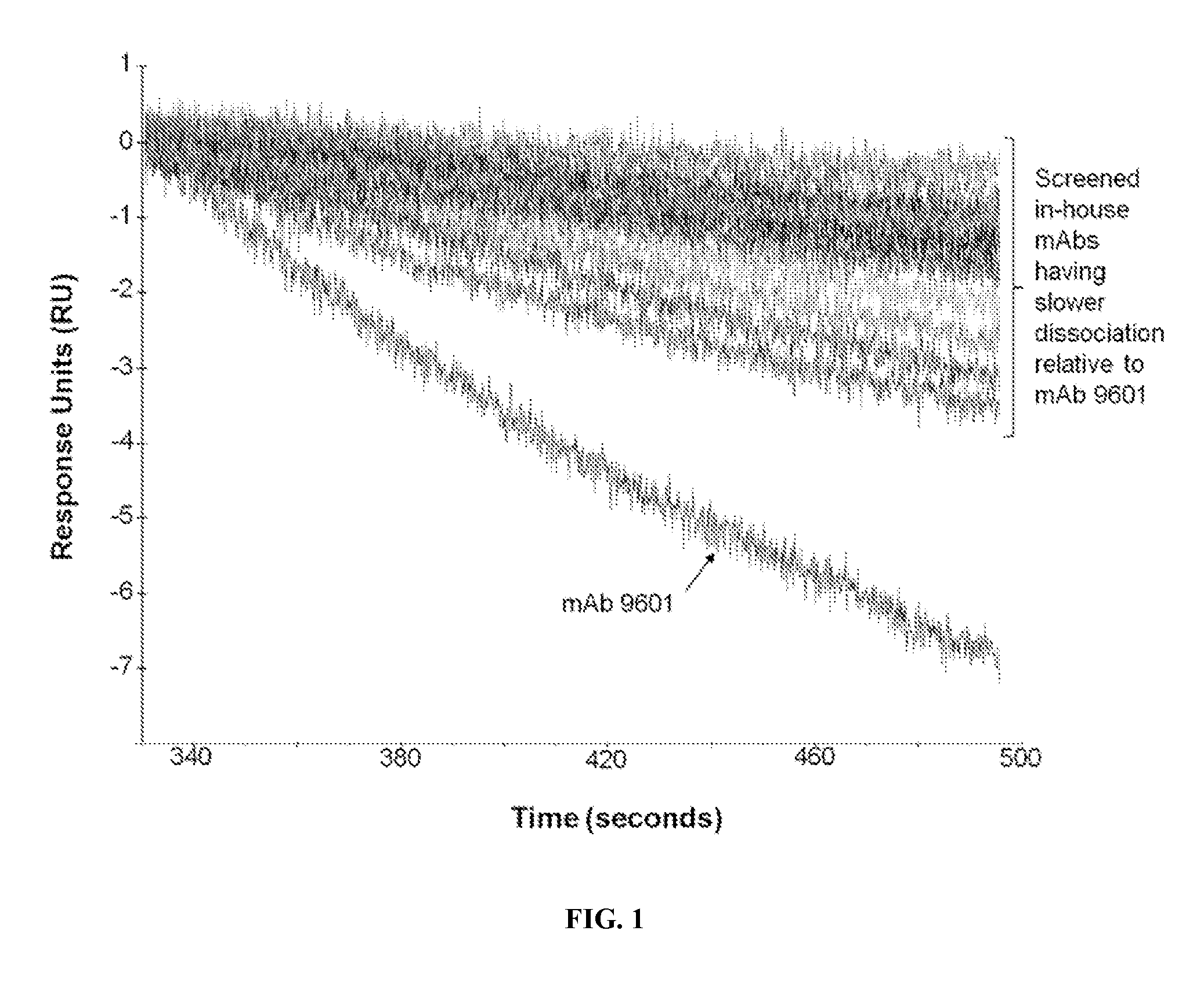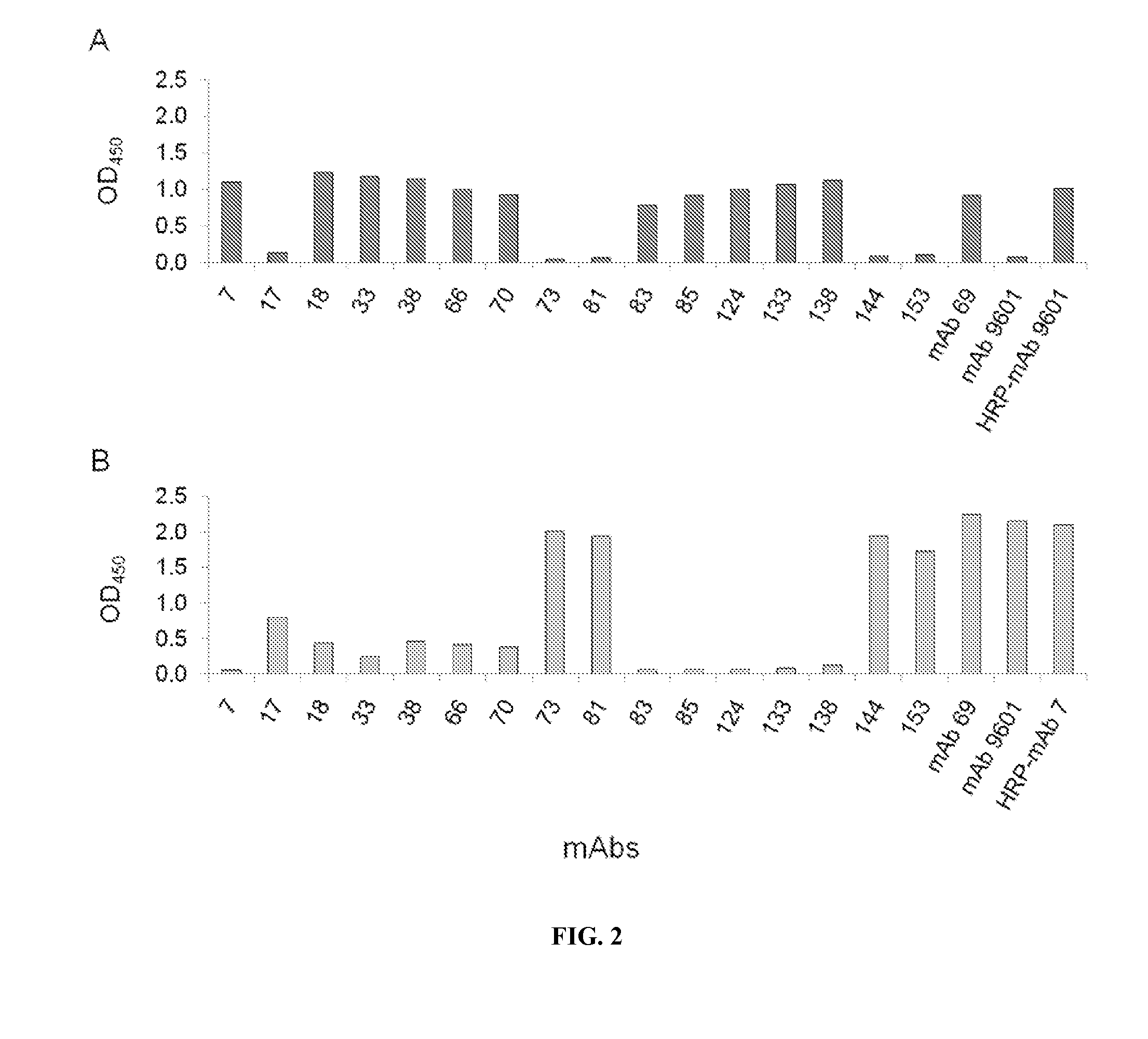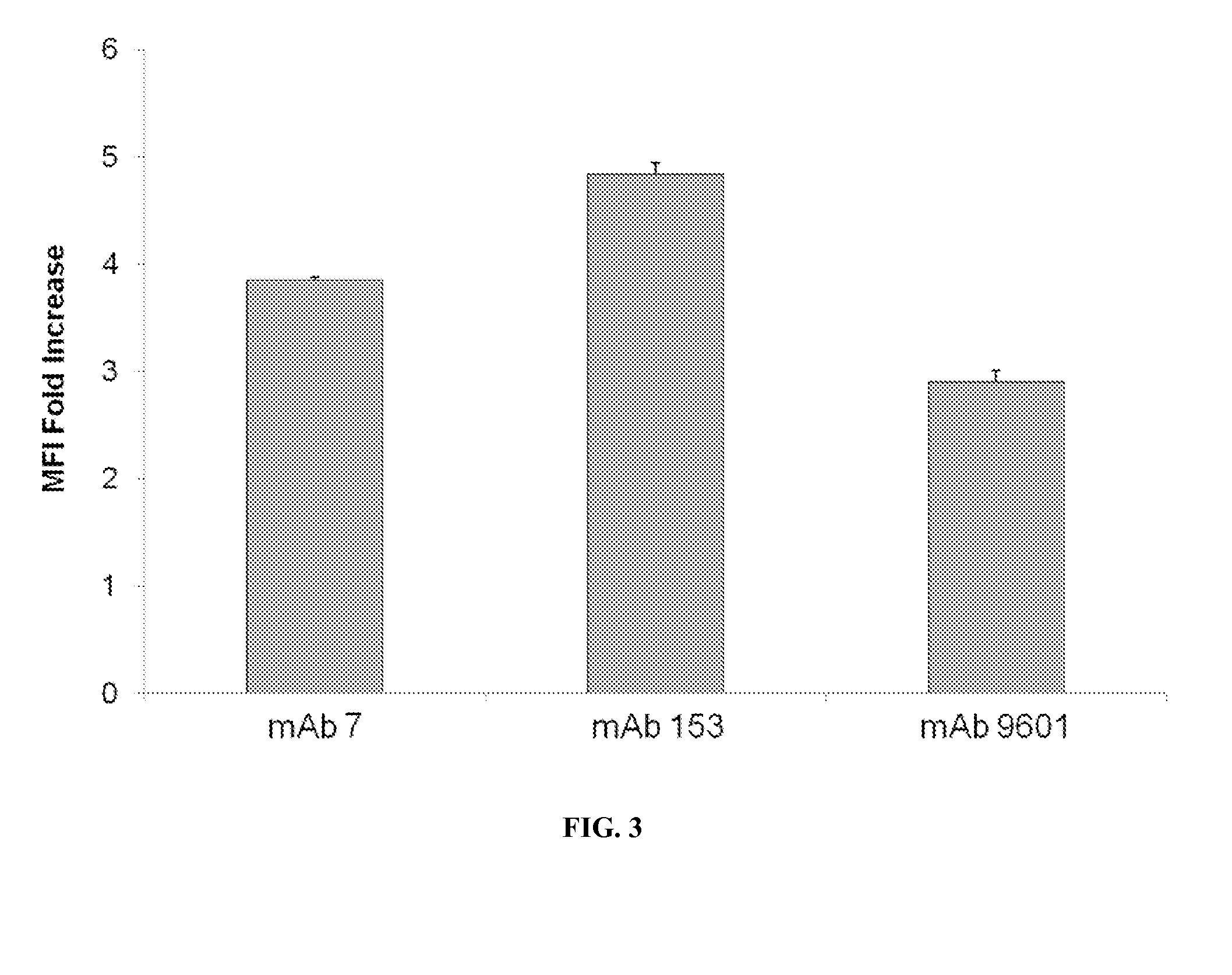Monoclonal antibodies targeting epcam for detection of prostate cancer lymph node metastases
a prostate cancer and lymph node technology, applied in the field of cancer biology, can solve problems such as compromising quality of li
- Summary
- Abstract
- Description
- Claims
- Application Information
AI Technical Summary
Benefits of technology
Problems solved by technology
Method used
Image
Examples
example 1
Materials and Methods
[0089]Monoclonal Antibody Panel Generation.
[0090]Commercially available mouse IgG2b monoclonal Ab (mAb) 9601, specific for human EpCAM, was purchased from R & D Systems (Minneapolis, Minn.) and maintained at −20° C. prior to labeling. To generate in-house anti-EpCAM mAbs, two separate immunization strategies were pursued: BALB / c mice were immunized with either recombinant human (rhu) EpCAM / Fc (960-EP, R&D Systems, Minneapolis, Minn.) or MCF7 cells (HTB-22™, ATCC, Manassas, Va.), a human breast adenocarcinoma line that expresses EpCAM (Prang et al., 2005; Munz et al., 2010). EpCAM / Fc was administered using standard methods as previously described (Pinkston et al., 2011). For whole-cell immunization, MCF7 cells were grown in GIBCO® Dulbecco's Minimal Essential Medium (DMEM) (Invitrogen Corporation, Carlsbad, Calif.) with 10% fetal bovine serum (FBS) to 80%-100% confluency in T75 flasks, detached with Trypsin-ethylenediaminetetraacetic acid (EDTA) (Cellgro, Manassa...
example 2
Results
[0115]Anti-EpCAM MAbs Selected by Off Rate Analysis and Competitive Binding.
[0116]Screening and analyses of single-cell clones from parental wells of hybridoma fusions were performed as previously described (Pinkston et al., 2011; Canziani et al., 2004) and yielded a mAb panel with slower off rates than that of commercial mAb 9601 (FIG. 1). During competitive binding assays, binding of some mAbs, including mAbs 17, 73, 81, 144, and 153, to EpCAM blocked binding by mAb 9601, suggesting shared binding epitopes (FIG. 2A). However, mAbs 7, 18, 33, 38, 66, 70, 83, 85, 124, 133, and 138 did not inhibit mAb 9601 binding, suggesting epitopes that do not overlap or binding sites that do not compete with that of mAb 9601 (FIG. 2B). From subsequent analysis that compared mAb 7 to the mAb panel, the inventors found that mAbs that do not have overlapping epitope binding with mAb 9601, have an overlapping footprint with mAb 7. Thus, the mAb panel could be categorized into two unique groups...
example 3
Discussion
[0143]Sentinel LN dissection (SLND) has been standard-of-care in breast cancer staging and recently, has been under investigation for staging PCa (Holl et al., 2009; Janetschek et al., 2007). It is also notable that with the advent of improved systemic treatment, recent studies have shown that breast cancer patients with limited sentinel LN metastases have gained no benefit from extensive LN dissection (Giuliano et al., 2011). Earlier detection of PCa using PSA testing and PLND may continue to decrease mortality rates due to PCa, but may also inherently increase the risk for overtreatment in low-risk PCa patients (Jemal et al., 2010), especially with the advent of new pharmacologic therapies against PCa. A molecularly targeted imaging agent that offers both benefits of noninvasive imaging and intraoperative guidance for resection of cancer-positive LNs is needed for more accurate and effective PCa staging as well as staging of other epithelial cancers.
[0144]EpCAM, which is...
PUM
| Property | Measurement | Unit |
|---|---|---|
| wavelengths | aaaaa | aaaaa |
| pH | aaaaa | aaaaa |
| molar concentrations | aaaaa | aaaaa |
Abstract
Description
Claims
Application Information
 Login to View More
Login to View More - R&D
- Intellectual Property
- Life Sciences
- Materials
- Tech Scout
- Unparalleled Data Quality
- Higher Quality Content
- 60% Fewer Hallucinations
Browse by: Latest US Patents, China's latest patents, Technical Efficacy Thesaurus, Application Domain, Technology Topic, Popular Technical Reports.
© 2025 PatSnap. All rights reserved.Legal|Privacy policy|Modern Slavery Act Transparency Statement|Sitemap|About US| Contact US: help@patsnap.com



